Your Starting Point
To participate in the walk download a copy of the map or collect a copy from the Karrakatta Cemetery office near the main entrance. The walk is approximately two kilometres long and takes around two hours to complete. It is possible to start, leave or re-join the walk at any stage.
The Lodge and Waiting House
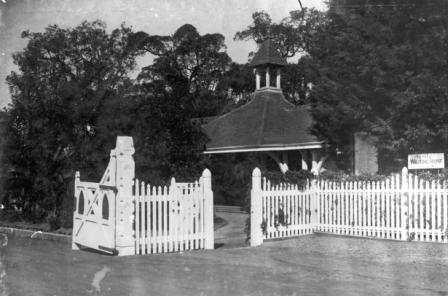
Inside the main gates of Karrakatta Cemetery off Railway Road are the Lodge and Waiting House. They were constructed in 1898-99 and are still in use today.
The Lodge was constructed by builder JS White for the cost of 498 pounds. Monday 24 April 1899 was fixed as opening day, and The Lodge was completed with few problems or delays, ready for the Superintendent to move in.
The Lodge has been home to a number of families and workmen at Karrakatta Cemetery. In 1993 it was moved 20 metres north to allow for the expansion of the administration offices, and restored back to the original size for use as administration and meeting areas.
The Board also planned a comfortable Waiting House for mourners to assemble while waiting for corteges to arrive. In 1905 a contract was awarded to George Temple Poole to design a suitable waiting house and public facilities at a cost of 406 pounds. The Waiting House has been modified over the years but is still used today as an assembly areas for mourners.
To start off the walk, proceed down the driveway from the Old Lodge building near the main entrance and follow the path to the right of the rose gardens to the first gravesite.
1. Tom Outridge (1898-1973) Sportman
Roman Catholic BA 308

Tom Outridge was born in Ballarat, Victoria and grew up in Kunanalling, north of Coolgardie where his father was manager of the Shamrock mine. Prior to the outbreak of the Great War, there was compulsory military training for cadet and citizens forces on the goldfields, including participation in football.
Outridge subsequently began his football career with the Coolgardie H-Company Cadets football team. After his first game, at the age of 14 years, he was scouted by the Mines Rovers’ Football Club. He played a successful first season and when he came to Perth in 1914 was given a job with retailer Harris Scarfe and Sandover. His football prowess was already known to the local football clubs and he joined the Perth Club at the age of 16 years. His football career with Perth was undistinguished, though he tried his best over the 40 games he played with the club.
In 1919 he joined Subiaco Football Club. This marked the beginning of a lifetime association with the club. He played 217 games with Subiaco and subsequently played for Western Australia between 1921 and 1930.
Tom Outridge is remembered as one of the greats of ‘Aussie Rules’ and was the first-ever Sandover Medallist in 1921. He was inducted into the West Australian Football Hall of Fame in 2004.
In addition to football, Outridge was a King’s Cup rower, long distance swimmer and first-class cricketer. He married Eileen O’Dea, sister of Joseph George O’Dea and daughter of Michael O’Dea, and was a lifetime friend of the O’Dea family with whom he is buried.
2. Michael O’Dea (1863-1932) Undertaker
Roman Catholic BA 308
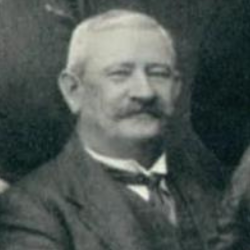
Michael O’Dea was born in County Clare, Ireland and travelled to Australia with his parents, Martin and Brigid O’Dea, in 1865. Martin O’Dea was a prison warder and later an enrolled pensioner guard. He died in 1893 and was buried at the East Perth Cemeteries.
Michael O’Dea was educated until the age of twelve at the Roman Catholic School in Perth, and then was apprenticed to the blacksmith trade. He established his own business in 1888, later entering into partnership with William Bowra.
In 1892, Bowra and O’Dea, Wheelwrights was established on the corner of Goderich and Hay Streets, Perth. By 1893, they also advertised as the Standard Coach Factory which offered funeral undertaking services “on the shortest notice and with the most respectful manner”. The Standard Coach Factory constructed all the wagons and mobile equipment required for the first two contingents to serve in the Boer War.
By 1905, Bowra and O’Dea Undertakers was established at 195 Pier Street, Perth. Michael O’Dea was a dedicated and active Roman Catholic, and his firm attracted a high proportion of Catholic funerals. O’Dea was a rifle marksman, representing the state on a visit to England to celebrate the Diamond Jubilee of Queen Victoria. He took great pride in his Irish heritage, was a founding member of the Celtic Club and was National President of the Hibernian Society from 1912-1916.
O’Dea was active in the support of Ireland’s struggle for independence. He represented Western Australia at the Irish Race Convention in Paris in 1920. Michael O’Dea was the first undertaker appointed to the Karrakatta Cemetery Board and served from 1916 to his death in 1932 at the age of 68 years. His obituary included the words, “He was the noblest Roman of us all.”
3. Ada Bromham (1880-1965) Women’s Temperance Activist
Garden of Remembrance 20A
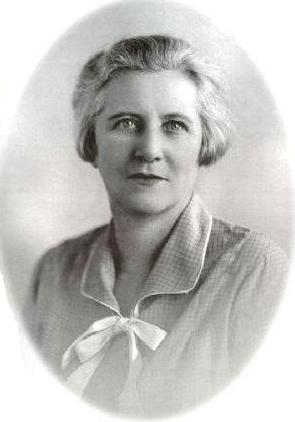
Ada Bromham was born in Victoria, the daughter of a blacksmith and miner. The family came to Western Australia in 1893. In 1908 she formed a partnership and founded a Claremont drapery store. The business prospered and by the 1920s Ada Bromham’s financial situation permitted her to pursue her feminist and temperance interests.
She held office in the Women’s Service Guild, the WA Temperance Alliance, the Australian Women’s Equal Citizenship Federation and the Australian Federation of Women’s Societies. In 1926 she attended the International Suffrage Alliance Congress in Paris and led the Australian delegation to the British League on Emigration. She contested the Claremont seat for the State Parliament in 1930.
Ada Bromham moved to Melbourne in 1934 and devoted her efforts to the national office of the Women’s Christian Temperance Union (WCTU) in Victoria and South Australia. She was committed to the Chinese-Australian Friendship Society and joined the peace delegation to Peking in 1952. She returned to Perth in 1959 and worked for Aboriginal welfare.
As the Australian representative for the World WCTU, Ada Bromham fought State and Commonwealth ministers to improve conditions for Aboriginal and Torres Strait Islanders.
4. Alfred Carson (1859-1944) Journalist and Aged Care Advocate
Crematorium Rose Gardens Family Shrub Section B
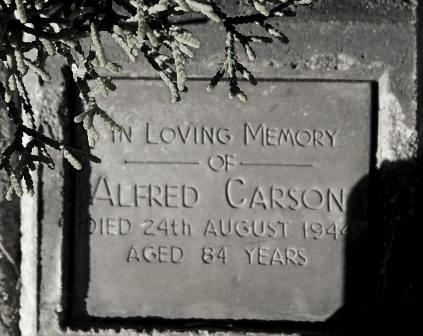
Born in Middle Swan, Alfred Carson was one of nine children. He was educated at Guildford School and after graduation became a teacher at Perth Boys’ School and Geraldton School where he was appointed Headmaster at the age of 19 years.
Later he gave up teaching in favour of journalism. In 1884 he married Eva Massingham and they had five children. In 1895 Alfred Carson became leader writer on the Daily News, later joining The West Australian as cable editor. In 1897 he became editor of The Western Mail. In 1918 he represented the press of Western Australia on a Commonwealth delegation of twelve journalists who visited the Western Front.
In 1923 he unsuccessfully contested the Perth seat for Federal Parliament. Alfred Carson’s legacy was the important commitment he made to the establishment of district and bush nursing and geriatric care through the Silver Chain nursing service. He was amongst the first members of the Infant Health Association; Chairman of the McNess Housing Trust; member of the council of the Flying Doctor Service; and an executive of the Australian Red Cross. He was also a Justice of the Peace and Magistrate of an earlier Children’s Court bench.
Alfred Carson was Chairman of the Silver Chain for over 30 years. In 1944 he was awarded an Order of the British Empire for his lifetime of charitable and community work. His ambition for the provision of a nursing home for the indigent aged and chronically ill was not achieved in his lifetime, but in 1946, two years after his death, such a hospital was opened and named in his honour.
5. Arthur Male (c1871-1946) Merchant and Politician
Crematorium Rose Gardens Rose Bed 1
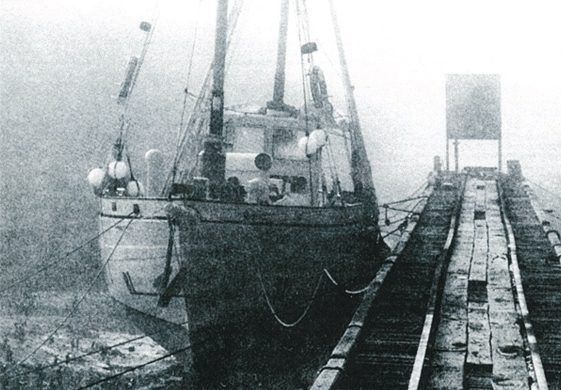
Arthur Male was born and educated in Dorset, England. He migrated to Perth in 1890. He initially worked on a farm in Guildford before heading north to Broome in 1894. Male managed a store in Broome for E. W. Streeter, a London jeweller who had pearling and pastoral interests in the region. A partnership of Streeter and Male was formed, and Arthur was eventually sole manager.
Arthur Male was joined by his brother, Archie, and together they expanded their business interests. They purchased Hill Station between Broome and Beagle Bay, and Ida Valley near Leonora where they fattened cattle from the north for sale in the Eastern Goldfields and Perth.
After World War I, world demand for pearl shell declined and the economic conditions of the 1920s curtailed the cattle industry. The Male brothers had originally shipped cattle to Java in return for reciprocal trade in sugar and rice for their Asian indentured labour. In 1921, the Federal government prohibited imports of sugar and rice in order to protect local industry. In 1929, the outbreak of a cattle disease meant the prohibition of all cattle from the north for the southern markets.
Arthur Male represented the Kimberley in the Legislative Assembly 1905 to 1917. He was a member of the Broome Road Board, and from 1928, Honorary Consul for Japan. He retired to Perth in 1930, handing management of the Broome business to his eldest son, Sam Male. In March 1998, his grandson, Kim Male, announced the closure of the Streeter and Male Supermarket. After nearly 100 years of serving the people of Broome, the store could no longer compete with the national chains.
6. James Sykes Battye (1871-1954) Librarian
Crematorium Niche Wall C
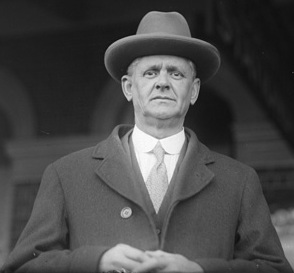
James Battye was born in Geelong, Victoria and educated at Geelong College and the University of Melbourne. He was awarded a B.A. in 1889, and an LL.B in 1893. He came to WA in 1894 on his appointment as Chief Librarian of the new Victoria Public Library in Perth.
The public library, museum and art gallery were administered as one institution and Battye served as general secretary from 1912 until his death in 1954 aged 82 years. He personally selected the library’s impressive and wide-ranging book stock. By 1911 there were over 100,000 volumes in the library. However, finance for the public institutions was limited and as a result the quality of the initial purchases was not maintained.
Battye established a Public Records Committee in 1923 to ensure the preservation of valuable government records. In 1945 he persuaded the government to establish a State Archives within the library.
Battye published three important volumes on the history of the state, Cyclopaedia of Western Australia (1912-13); History of the North-West of Australia (1915) and Western Australia: A History (1924).
He was a founding member of the Western Australian Historical Society in 1926 and Chairman of the 1929 Centenary Celebration Committee. Battye was Secretary of the Wesley Church Trust; President of the Children’s Hospital Board; Chairman of Governors of Hale School and Honorary Secretary of the Victoria Institute for the Blind.
He was active in the establishment of the University of Western Australia, and was a member of the first Senate and Chancellor from 1937 to 1943. He was committed to Masonry, and was appointed Grand Master from 1936 to 1951. He claimed life tenure on his position at the library.
It is a fitting memorial that the J. S. Battye Library of West Australian History (part of the State Library of Western Australia) was named in his honour in 1956.
7. Sir Joseph John Talbot Hobbs (1864-1938) Architect
Crematorium Niche Wall D
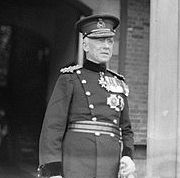
Joseph John Talbot Hobbs was born in London, the son of a journeyman joiner. He arrived in Perth in 1887 and became a successful architect and partner in the firm of Hobbs, Smith and Forbes. Amongst his design credits are the Weld Club, the Masonic Hall, the Swan Brewery and the Church of England offices.
Hobbs was an active Anglican who owned considerable property in the central Perth district. He served on the Karrakatta Cemetery Board on two occasions. His first term was from 1897 to 1916. He interrupted his architectural career and service to the Board to serve in World War I as Lieutenant-Colonel in command of the 1st Australian Division serving at Anzac, Pozieres and later the 5th Division at Bullecourt, Ypres and the Somme. He was the commander of the Australian Corps after the demobilisation of the A.I.F. in Britain with the responsibility to bring home the Australian troops.
Talbot Hobbs was re-appointed a trustee of the Karrakatta Cemetery Board in 1922 and served as Chairman from 1937 until his death from a heart attack en route to England in April 1938. His body was returned to Perth and a state funeral was held for him on 14 May 1938. This was the first state cremation service held after the opening of the crematorium in 1937.
A twice life-sized bronze statue of Lieutenant General Sir Joseph John Talbot Hobbs is situated along Riverside Drive, west of Barrack Street overlooking the site where the annual ANZAC Day celebrations are held in Perth each year.
8. Charles William Snook (1891-1948) Aviator
Columbarium Niche Wall I
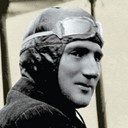
Charles Snook was born in North Fremantle and educated in Perth and Sydney before attending Hawkesbury Agricultural College. At the age of 24 years he went to England to follow a boyhood dream of becoming an aircraft pilot. He won a commission in the Royal Flying Corps and in 1915 enlisted in the Royal Air Force. Snook was subsequently shot down over Germany and taken prisoner.
In 1917 he was exchanged for a German officer and was posted to Salisbury, England, until the end of the war. He returned to Australia after the war, working as a commercial pilot for a time in Sydney. Snook then took up farming in Western Australia before settling in Perth with his wife, Hilda Burn Kershaw, a medical practitioner.
Snook’s interest in aviation once again came to the fore. He became a flying instructor with Western Air Services. He organised “joy rides” and often performed with the parachutist Jimmy Reece. From 1934-36 he was chief pilot on photographic surveys of the Eastern Goldfields. With other interested investors, he formed Airlines (WA) Ltd and operated the Perth-Wiluna- Kalgoorlie routes.
Though times were difficult during the Great Depression, he persevered with the joyrides and the mail run. He purchased a Stinson Reliant for flights to Rottnest Island, Esperance, Port Hedland, Marble Bar and Meekatharra. The plane was destroyed by enemy action in Broome in 1942, but the company continued and prospered.
9. William Ernest Bold (1873-1953) Town Clerk and City Planner
Columbarium Niche Wall N

William Ernest Bold was born in Lancashire, England and migrated to Western Australia in 1896. He was immediately employed as a clerk-typist by the City of Perth and in September 1901 was appointed Town Clerk, the youngest in any Australian capital. He quickly gained a reputation as a “stickler” for efficiency and instigated many changes to the administration of the City of Perth.
Bold based his concepts on the Birmingham civic administration model created by Joseph Chamberlain, promoting the key areas of engineering, building, health, sanitation, and administration.
Historian Tom Stannage writes of William Bold in The People of Perth: “Cool under fire, persuasive in conversation and in written reports, Bold became a powerful driving force in Council affairs… he always wore a top hat and morning coat with a very high collared shirt. He also affected a tightly twirled moustache. In Council meetings he was always bewigged. This in itself was a source of wonder to the self-made men he served”.
William Bold was a strong advocate of municipal socialism; that is, one authority to control most of the city’s facilities. He promoted the idea of a Greater Perth and the amalgamation of suburban municipalities of Leederville, North Perth and Victoria Park into the City of Perth during World War I.
In 1918 Perth City Council purchased the 526 hectare Limekiln Estate west of the city, and Bold refined his concept of Greater Perth to include the satellite garden and seaside suburbs. In 1928 the Western Australian Parliament passed Australia’s first Town Planning Act from which emerged the Town Planning Committee of the Perth City Council.
William Bold had served as “Town Clerk Extraordinaire” for 44 years when he resigned in 1944. Bold Park, in the suburb of Floreat Park west of the city, is a lasting testimony to his work.
10. Brigadier Arnold William Potts (1896-1968), Military Leader
Crematorium Rose Gardens 8E
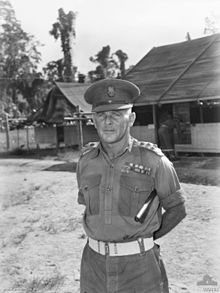
Brigadier Arnold William Potts was a military leader with a distinguished career, most notably leading the 21st Brigade during its defence of the Kokoda Trail during the Second World War.
Arnold Potts was born on the Isle of Man and migrated to Perth with his family in 1904. Educated at Cottesloe State School and later at Guildford Grammar School, Potts enlisted in the Australian Imperial Force in 1915 and was posted to the 16th Battalion. He served at Gallipoli from July and was promoted to sergeant in October, at the age of just 19. Potts was sent to the Western Front and for his actions at Mouquet Farm and on the Somme Battlefield in France he won the Military Cross.
After being severely injured in 1918, Potts returned to Western Australia, buying his own farm in Kojonup and later married Doreen Wigglesworth in 1926.
During the Second World War, Potts, – a respected officer with the A.I.F., was promoted to temporary brigadier in April 1942, taking command of the 21st Brigade that held back the Japanese advance during bitter fighting on the Kokoda Trail. Conducting a battle in conditions so hostile they were beyond the ability of headquarters staff to imagine, Potts was recalled to Port Moresby and relieved of his command in October 1942.
Potts retired from the military following the end of the war and returned to Kojonup and farming in 1945. He became involved in numerous community organisations and was appointed O.B.E. in 1960. Arnold Potts is commemorated together with his wife Doreen who herself was awarded the British Empire Medal for services to the community.
11. Oswald Hewlett Sargent (1880-1952) Botanist
Crematorium Rose Gardens 7B
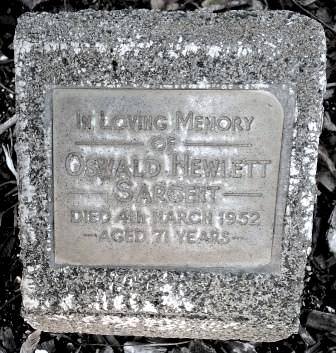
Oswald Sargent was born in England and migrated to Western Australia with his family in 1886. His father, Obeitho, established a pharmacy in York and trained his son in the business. However, Oswald Sargent’s true interests lay in the field of botany. He pursued his botanical interests with great enthusiasm, obtaining qualifications and distinctions, and in 1914 was recognised as an authority on WA orchids by the British Association for the Advancement of Science.
Sargent joined the Western Australian Naturalists’ Club in 1924 and was President from 1928-1929 and 1931-1932. He married pharmacist Gertrude Onions and they moved to Perth for a period of time, but returned to York in order to concentrate on botany.
Oswald attempted to grow native orchids from seed and planned to write a book about Western Australian flora. School children were encouraged to send him specimens, but the project became too big and was abandoned. His well-curated collection of plants was given to the Western Australian Herbarium.
12. Thomas George Anstruther Molloy (1854-1938), Businessman, Politician and Chairman of the Karrakatta Cemetery Board
Roman Catholic AA 6
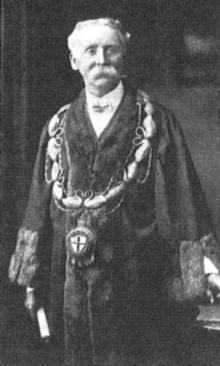
Thomas Molloy was born in Canada. He began his working life in Perth as a baker, but soon showed aptitude as a businessman and property developer. He built the Metropole Hotel in Hay Street, the Royal Theatre next door, and His Majesty’s Theatre and Hotel. By the 1890s he was one of the largest land owners in Perth.
In 1884 Molloy was elected to Perth City Council. In the 1890s he was elected Member for Perth in the Legislative Council. He served as mayor of Perth from 1908-1909 and from 1911-1912.
Molloy also became the fourth member of the original Board of Trustees for Karrakatta Cemetery. He was appointed chairman in 1924 and served the Board for 40 years in all.
13. Philip Collier (1873-1948) Premier of Western Australia
Roman Catholic AA 301A
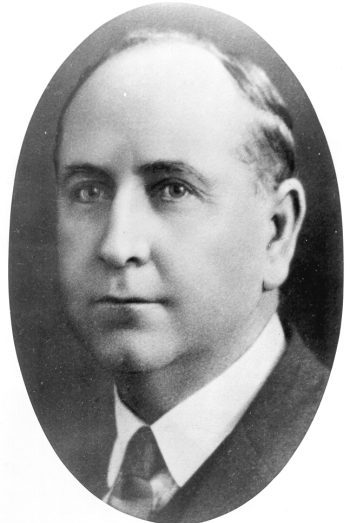
Philip Collier was born in Victoria. At the age of 16 he left school to try his luck in the goldfields of New South Wales and Victoria. He moved to Western Australia in 1904 to work with the Perseverance Gold Mining Company in Boulder. Collier became a delegate for the Amalgamated Workers’ Association and Vice President of the Goldfields Trades and Labour Council. These appointments helped him win the seat of Boulder in the Legislative Assembly in 1905, marking the beginning of a parliamentary career that would span 43 years, including 19 years as Labor leader and nine years as Premier.
During his term as Premier, Philip Collier continued the rural development begun by Sir James Mitchell. He opened up and doubled the land area for wheat crops and encouraged the development of a dairy industry in the south-west. In 1925 he signed an agreement with the British government to accept British migrants and settle them on the land. From 1925-28, 4,000 migrants per year were given assisted passage.
The Collier Labor Government cooperated with the union movement, and despite problems with a hostile Upper House, a state basic wage and a 44-hour week were introduced to Western Australia.
Collier lost government in 1930 but was returned in 1933 to be confronted with the electorate’s vote on secession from the Commonwealth of Australia. Collier was opposed to secession, but the petition to the British Parliament went ahead regardless, to be defeated. Collier stepped down from the premiership in 1936, and stayed on the backbench for another 12 years.
14. Mary “May” Alice Holman (1893-1939) Politician
Roman Catholic AA 422
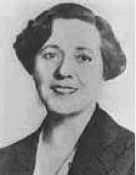
May Holman was born in Broken Hill, New South Wales and came to the Murchison Goldfields with her family in 1896. She was convent-educated in Dongara, a coastal town south of Geraldton, and Perth. Her mother was active in the Labor Women’s organisations and her father was the Secretary of the State branch of the Timber Workers’ Union from 1908-1925 and a Labor member of the Legislative Assembly from 1901-1921.
May Holman assisted her father in union affairs and after his death in 1925 she won the by-election for the blue ribbon seat of Forrest. She became the first Labor woman parliamentarian in Australia, and retained her seat through four elections. She represented the interests of families in the small timber settlements of her electorate, and spoke passionately on the lack of medical care, housing, schooling and the dangerous working conditions in the timber industry. She was responsible for the Timber Regulation Act 1926.
Although not considered a radical, she fought for many reforms. She worked for equal citizenship rights for women, equal pay for men and women, child endowment, raising the school leaving age to 16 and for improvements in the training and working conditions for female domestic servants.
May Holman opposed non-British migration and supported an isolationist foreign policy. In 1938 she was an advocate for the Royal Commission that was set up to look into sanitation, slum clearance, health and housing regulations in Perth. She was killed in a car accident on the day of her re-election to Parliament on 20 March 1939.
15. Richard John Anketell (1862-1928) Surveyor
Serenity Gardens DB 229
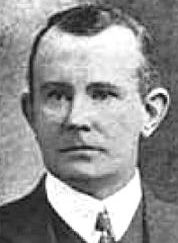
Richard Anketell was born in Melbourne, and as a young man joined a survey team as a chainman with the Victorian Railways. He later qualified as a surveyor/engineer and completed the survey of various railway lines in Victoria and Tasmania.
Anketell came to Western Australia and was employed by the Public Works Department where he worked as resident engineer and as supervisor of the Southern Cross – Coolgardie Railway works.
In 1901 he was a member of the preliminary team that surveyed the Western Australian section of the Transcontinental Railway. In addition to this work, he was supervisor of the enormous rabbit-proof fence project. In 1908 Richard Anketell was the chief surveyor of the Transcontinental Survey, a trek which used 90 camels for transport and haulage and employed 40 men.
During and after World War I, Anketell used his considerable engineering skills for harbour projects and many wheatbelt railways throughout the state. His last great project was the drainage of the Peel Estate. The drainage was necessary to render the land suitable for farming by the settlers in the Group Settlement Scheme following the War.
Richard John Anketell spent most of his life working in remote, uninhabited locations, and his expeditions opened up large areas of the country. He was a pioneer explorer and his management of men, animals and equipment in the outback was legendary.
16. Montague David “Monty” Miller (1839-1920), Trade Unionist
together with his son and wife buried in this previously unmarked grave
General AA 0003
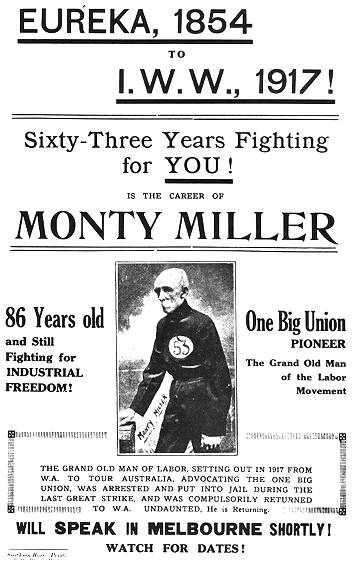
Montague David Miller, known as Monty, was born at Clarendon, Van Diemen’s Land (Tasmania) in 1839. He went to Victoria where he worked as a gold digger and was celebrated as a veteran of the Eureka Stockade. A carpenter, Miller was an active trade unionist and advocate for the rights of working people.
Miller moved to Perth around 1897 and was soon prominent in labour circles as a militant unionist, and a founder of the Labor Church and the Social Democratic Federation.
Disillusioned with the Labor Party, for which he had earlier worked, he embraced the principles of the Industrial Workers of the World – industrial unionism and direct action in the class struggle, advocating for the ‘establishment of an Industrial Commonwealth founded on collective ownership of land and capital’.
He was tried as a member of the I.W.W. in Perth in 1916 and found guilty of conspiracy for his anti-conscription activities, but was released.
He continued his court-room defiance outside, touring Australia condemning the war, and the next year in Sydney was again sentenced to jail for his membership of an illegal organisation and was again released, because of his age. The bitter divisions of World War I had brought him into greatest prominence at the end of his life. He died in Perth on 17 November 1920.
John Curtin, Australian Prime Minister 1941–1945, said of him, “I know of no man who has done more for the labour movement than Monty Miller”.
It is understood Monty had said that the family grave should remain unmarked and so it did until February 2009. Considering the role he played in the labour movement over many years however, the Australian Society for the Study of Labour History, the National Trust of WA and Monty’s descendants arranged for a modest plaque to be placed at the foot of the grave bearing only the names and dates of those buried there.
A Memorial to Monty Miller has been placed in Garden Bed W, plots 0016 & 0017 at the rear of Serenity Gardens at Karrakatta Cemetery.
17. John “Julian” Alexander Salmon Stuart (1866-1929) Trade Unionist and Writer
General BA 21

John Stuart was born in New South Wales. In his lifetime he was a trade unionist, journalist, poet and politician. As a member of the Queensland Labourers’ Union, he faced conspiracy charges in 1891 with a number of other union leaders. He was amongst the 12 to be given three years’ imprisonment.
Stuart was released in 1894, married singer Rhoda Collings and together they travelled to the Eastern Goldfields in Western Australia. John Stuart was a member of the Australian Workers’ Association, and from 1903-1906 manager and editor of the Westralian Worker (Kalgoorlie) before his election to the Legislative Assembly for Leonora from 1906-08.
His prose and poetry were published in jounals and newspapers such as The Bulletin, The Coolgardie Miner, The Brisbane Worker and The Western Mail. He often used the pseudonyms of “Curlew” and “Saladin”.
18. Amana Memorial
General CA 21-24
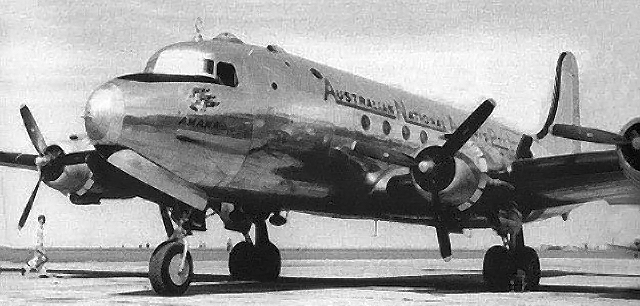
On Monday 26 June 1950 the worst civil aviation disaster to date in Australia happened near York, Western Australia. An Australian National Airways Skymaster Amana, the flagship of the company’s fleet, crashed and burnt north-west of York, soon after leaving Guildford airport. It came down on an isolated, heavily timbered portion of Mr Roy Inkpen’s 6,000 acre property, 12 miles north-west of York township.
24 passengers and five crew members died instantly in the crash. One passenger survived, but died in hospital a few days later. The City Coroner reported that identification of the bodies would be extremely difficult. Amongst those killed were four adults and an infant who were from the Northam Migrant Camp, a student who had arrived from Singapore the previous day, the managing director of Winterbottom Motor Company, and the Right Rev Charles Herbert Murray, Bishop of the Riverina Diocese in New South Wales.
A funeral for the mass burial of remains not individually identified was held at Karrakatta Cemetery on 3 July 1950.
19. John Keith Ewers (1904-1978) Writer
General Lawn 2, Grave 1
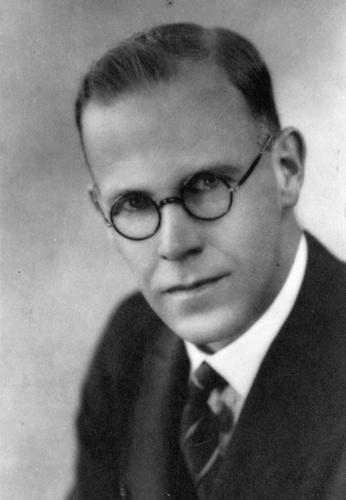
John Ewers was born in Subiaco and attended Perth Modern School during World War I. As a school student he showed promise as a writer. After finishing school he joined the Education Department, and from 1924 to 1947 taught in Wheatbelt towns, and at Nedlands, Spearwood and Perth Boys’ School.
During this period he contributed regular newspaper columns on Australian literature. His works included two books of poetry, five novels, a collection of short stories and a children’s book woven around Aboriginal legends. He wrote historical studies about the Kalgoorlie pipeline, Perth Boys’ School, Bruce Rock and Fremantle. In 1938 he became foundation president of the Fellowship of Australian Writers (WA) and was an active member until his death. In 1945 he published one of the earliest critical surveys of Australian literature.
In 1947 Ewers left teaching for full-time writing, and became one of the first people in Western Australia to support himself and his family by his writing. He later returned to work part-time as editor of technical correspondence courses. His book on the North-West, With the Sun on My Back, was a major winner in the Commonwealth Jubilee Competition of 1952.
Ewers gave lectures on Australian literature at the University of WA, spoke on radio and in public, as well as writing travel articles for magazines such as Walkabout. He was well-known to school children throughout the State for his English text books. Perhaps more popular were his alter-egos, Diogenes and Inky Wells, during ten years of the ABC’s Argonauts. In his autobiography, Long Enough for a Joke, published posthumously in 1983, J K Ewers gives a vivid account of early life in Subiaco and Wheatbelt towns as well as the development of his writing career which was long supported by his wife Jean, a well-known potter in Western Australia.
20. American Servicemen Memorial Gazebo
Corner of General Lawns 1 and 3
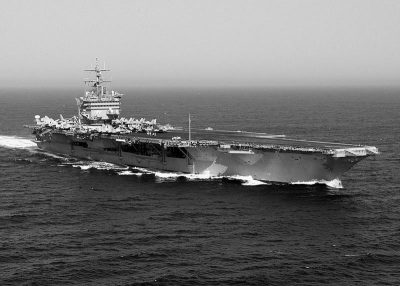
In 1943, 27 graves were used for American servicemen who died during World War Two, and concrete crosses erected on each grave. In addition a flagpole with the American flag was erected in the site. Arrangements were made for the flag to be raised and lowered daily with the cost met by the United States Army/Navy administration.
The cemetery staff included the American section in their daily rounds of grave maintenance. Later the Board received exhumation orders for all interred American personnel and the remains were transferred to the American War Graves section at Rookwood Cemetery in Sydney, New South Wales. The original American flag pole was presented to the Young Australia League camp at Araluen.
In 1979 American navy personnel from the USS Enterprise dedicated the memorial gazebo erected the previous year by crew members of the American navy in honour of their fallen comrades.
21. Arthur Chatley (1861-1939) Plasterer
Brethren BA 6
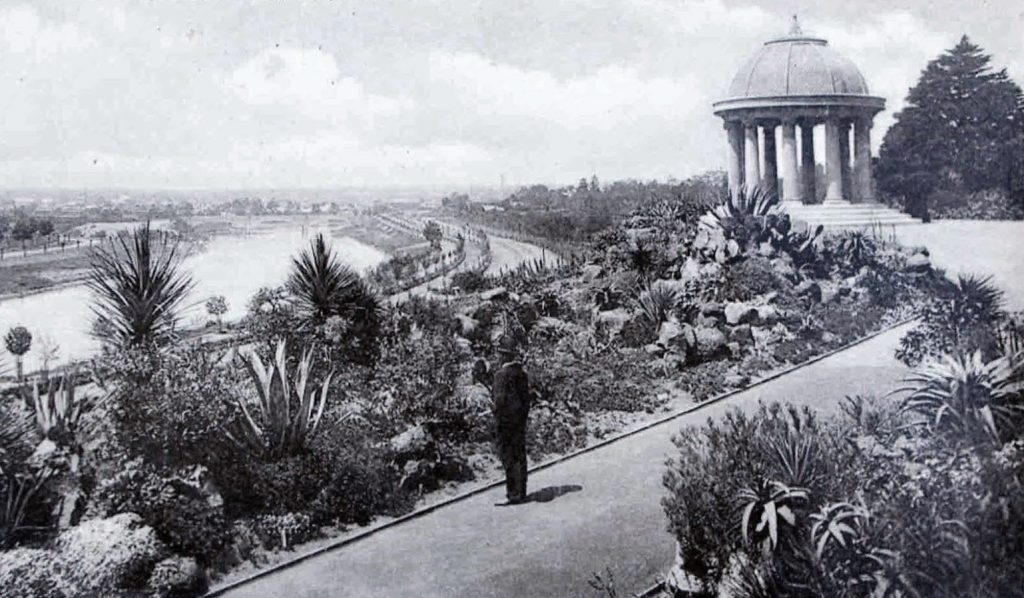
Arthur Chatley was born in Hobart, Tasmania, the sixth of eight children of William and Lydia Chatley. He was educated in Hobart and learned the trade of plasterer. He married Amelia Round in 1882. They moved to Melbourne and remained there until 1902.
Chatley, who was a member of the Brethren fraternity, had his own business in Inkerman Street, East St Kilda. In order to supplement his income to support his family, Chatley also worked in the Princess Theatre.
Arthur Chatley was commissioned by William Guilfoyle, Director of the Botanical Gardens, to design “The Temple of the Winds” monument in honour of Charles La Trobe, first governor of Victoria. It is said that Chatley placed old shoes and boots of family members in the foundations for the monument. After completing the monument in 1902, Chatley moved from Melbourne with his family to live at Manjimup, in Western Australia’s southwest. There he built a very fine family home, “Hillspring” on 160 acres. The property supported an apple orchard, cows and pigs. There were ten children, and five sons followed their father into the plastering craft.
Arthur and Amelia later lived in Subiaco, whilst his eldest son stayed at “Hillspring” until 1949. Over the years the acreage expanded to 714 acres. Arthur Chatley died in Perth in 1939, aged 79 years.
22. Sith Annie Chesters (c1865-1954), ‘Wood Lady of Subiaco’ and James Chesters
(c1864-1929) Builder and Mayor
Church of Christ AA 143/144
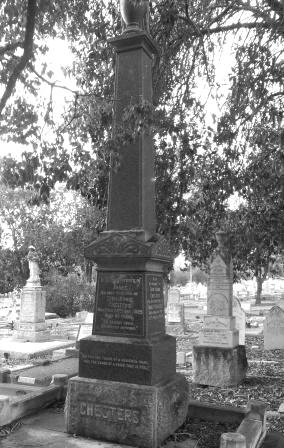
James Chesters was a well-known builder in Subiaco. For a time he was Mayor of Subiaco and served as a Trustee on the Karrakatta Cemetery Board from 1910-1912.
James Chesters’ wife Sith Chesters was always elegantly attired, usually donning large picture hats and white gloves. James Chesters, whilst a moderately affluent man, was very careful with his money. The Chesters had no children, and when James died in 1929, Mrs Chesters gradually withdrew from society, firstly selling their home and moving into a small house on the edge of King’s Park and living, it seems, only on what she had before her husband died.
She lived with the utmost stringency but was generous to charitable causes. She was known simply as the “Wood Lady of Subiaco” when she became a familiar figure pushing her old pram along Thomas Street collecting wood and bottles. She was also referred to as the “Bird’s Nest Lady”, a reflection on her hairstyle.
Over the years she became increasingly anti-social and fought a bitter and unsuccessful battle against a road going through her property. Sith Chesters made a unique contribution to the War effort during World War II. In August 1940, she bought two Spitfire fighter planes at the cost of 8,500 pounds each, to be kept in England and used in the Battle of Britain, and a training plane costing 1,750 pounds for Australian pilots to train in. She lived into her 80s and suddenly people realised she just wasn’t around anymore. Sith Chesters was one of the unusual characters and eccentrics of Perth. When she died she left many charitable bequests including funding for medical scholarships at the University of Western Australia.
23. Charlie Wandi (d.1959) Salvation Army Soldier
Salvation Army BA 599
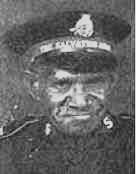
Charlie Wandi was an Aboriginal boy who was found as a small child beside the body of his mother who had died from snakebite. The group of men who found the boy in the desert region were surveyors for the laying of railway track between Kalgoorlie and South Australia.
As a young boy, Charlie Wandi was fostered by a family in Narrogin. He became a soldier in the Salvation Army in Narrogin in 1909 and later moved to Midland Junction. He was a drummer in the Salvation Army Band with the Midland Corps for many decades. He eventually lived in Darlington, where he carved model aeroplanes and boomerangs for children in the area. After Charlie died in 1959, Salvationists throughout Western Australia contributed to placing the headstone on his grave at Karrakatta Cemetery.
A migrant from England in the 1960s was moved with the stories about Charlie Wandi and wrote this tribute: “And in peaceful Karrakatta, out there in the Golden West, a little stone bears Charlie’s name, crossed drumsticks and Army crest.”
24. Martin O’Meara (1885-1935) War Hero
Roman Catholic HA 93

Martin O’Meara was born in County Tipperary, Ireland and migrated to Australia as a young man. He was employed as a sleeper cutter, but when World War I broke out he was quick to enlist at the Blackboy Hill Camp (Western Australia) and was posted to the 16th Battalion. He served from Gallipoli in 1915 until the last fight at Le Verguier in 1918. He was wounded on three occasions, and was awarded a Victoria Cross at Pozieres in August 1916. O’Meara was discharged in Perth in November 1919.
O’Meara’s citation for the Victoria Cross reads as follows:
Pozieres, 9-12th August 1916 Citation. Private Martin O’Meara,16th Australian Infantry Battalion
For most conspicuous bravery. During four days of very heavy fighting he repeatedly went out and brought in wounded officers and men from No Man’s Land under intense artillery and machine-gun fire. He also volunteered and carried up ammunition and bombs through a heavy barrage to a portion of the trenches which was being heavily shelled at the time. He showed throughout an utter contempt for danger and undoubtedly saved many lives.
– London Gazette: 9 September 1916
After discharge his health was poor and he spent the rest of his life in a military hospital in Claremont. He died on 20 December 1935 and was buried with full military honours. He was unmarried and had no relatives in Australia. His will instructed that any monies raised for him should be directed to the restoration of the ancient abbey at Lorrha in Ireland. His VC is in the custody of the 16th Battalion in Perth.
25. Peter Spero Michelides (1878-1966) Tobacco Trader, Linguist and Greek Community Leader
Greek Orthodox AA 40A
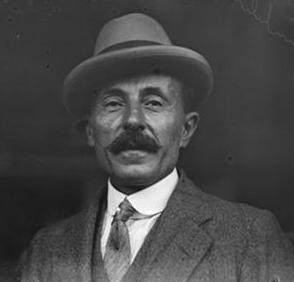
Peter Michelides arrived in Western Australia in 1901 from Port Said, Egypt. With his brother, Michael, they pioneered the tobacco industry in Western Australia and owned a vast property near Manjimup. His employees were mainly Macedonians, recent immigrants to Western Australia.
The Michelides Brothers owned property in Perth and built a tobacco factory on the corner of Lake and Roe Streets. They were well known for Luxor tobacco, President cigarettes and Rizla cigarette papers. Peter Michelides was a prominent Greek leader with both wealth and prestige. His daughter Jasmine died in 1932 at the age of 19 years and a very fine monument was placed on her grave AA 39A.
Peter Michelides served as an official Immigration Department translator responsible for imposing the dictation test on new arrivals. He was a skilled linguist and it was said that “to replace Michelides would require interpreters with six languages”. At various times he served as honorary consul for Spain, France, Greece and Imperial Russia. He was an influential president of the Hellenic Community from 1925-1939 during which time the Greek Orthodox Cathedral of St Constantine and Helene was built.
On 11 December 1940, Peter Michelides, representing the Hellenic community, presented a cheque for £1,368.3.0 for the Lord Mayor’s (Thomas Meagher) War Relief Fund for Greece.
26. John Doscas (1866-1946) Produce Merchant
Greek Orthodox AA 293
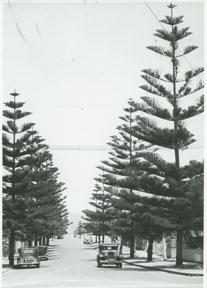
John Doscas was born in Sparta, Greece and migrated to Melbourne, Australia in the 1890s, arriving in Perth in 1896. He was a produce merchant and was responsible for the introduction of Saanen goats to the State.
Doscas served on the Cottesloe Town Council for 46 years, including a term as mayor of Cottesloe. He lived in John Street, Cottesloe and was close friends with his neighbour William Zimpel. Doscas and Zimpel were responsible for the planting of the Norfolk Island pine trees at Cottesloe that have become a landscape feature along the coast of Western Australia.
John Doscas was fluent in a number of languages and also benefitted from marriage to an Anglo-Australian woman who provided the necessary social contacts into Perth society. John Doscas was a wealthy and influential leader in the Greek community and was responsible for the allocation of land for the Greek Orthodox community at Karrakatta Cemetery in 1906.
27. George Peter Kailis (1900-1958) Fishing Empire Founder
Greek Orthodox AA 382
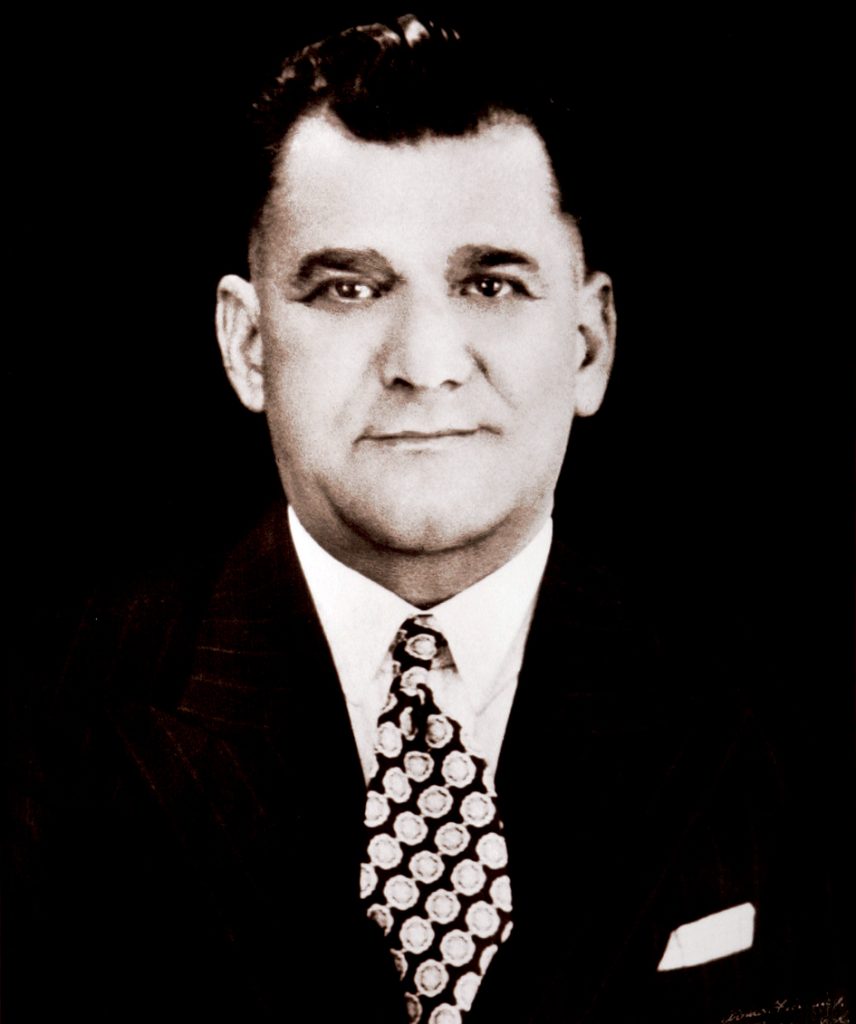
George Peter Kailis was born on the island of Castellorizo, Greece. After being evacuated to Alexandria, Egypt in 1912 when the Greeks were fighting the Turks, George and his father Peter arrived in Australia in 1914. They were later joined by his mother, Maria, after the war.
George worked as a cane-cutter in Queensland, a diver and a construction labourer in Darwin before coming to Western Australia. Under the migration agreement of the time, he had to spend two years cutting timber in the south-west near Nannup before taking up residence in Perth.
He married Evangelia Kannis and they had six children – four sons and two daughters. After the end of World War II, George and Evangelia Kailis were “family” for many new Greek migrants and at times had 15 to 20 people living in their home. “GP”, as George was known, found work and accommodation for the new arrivals.
George Kailis entered the fishing trade when he opened a shop in Barrack Street, Perth in 1936. The shop became well-known as a place for quality food and did not close its doors until 1990. The Kailis fishing empire, which he founded, was expanded by his sons from the late 1960s.
George Kailis was president of the Hellenic Community from 1947-1958 and a very generous benefactor to his community and Church. He died in 1958 and his wife Evangelia, only a few months later. The family commissioned a beautiful monument of St George and the dragon to mark his grave at Karrakatta Cemetery. This statue was badly damaged in the 1960s by vandals, but thankfully not beyond repair. It is an excellent example of beautiful memorials in Karrakatta Cemetery.
28. John Carroll (1892-1971) War Hero
Roman Catholic KA 658
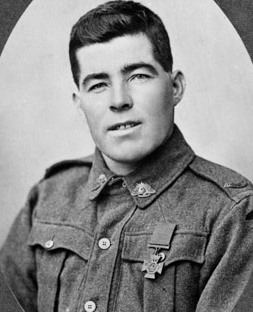
John Carroll was born in Brisbane and came to Western Australia as a young man. He worked as a labourer in Kalgoorlie and Karrawang until he enlisted in April 1916. He was posted to the 44th Battalion, composed mainly of Western Australians, and later to the 33rd Battalion in England for service in France as part of General Monash’s 3rd Division. He was twice wounded and was awarded the Victoria Cross in June 1917.
Carroll’s citation for the Victoria Cross read as follows:
St Ives, France, 7-10 June 1917, Citation Private John
Carroll, 33rd Australian Infantry Battalion
For most conspicuous bravery. During an attack, immediately the barrage lifted Private John Carroll rushed the enemy’s trench and bayoneted four of the enemy. He assisted a comrade and killed one of the enemy. He worked ahead with great determination until he came across a machinegun with a team of four men. He attacked the team, killing three of the men and capturing the gun. He extracted two comrades after they were buried, in spite of heavy shelling. Private Carroll displayed most wonderful courage and fearlessness… his gallantry and devotion to duty inspired all ranks in his battalion.
– London Gazette: 2 August 1917.
Carroll returned to Australia in August 1918 and in 1923 married Mary Brown. Whilst working as a truck examiner at a timber mill at Yarloop, his foot was badly crushed and eventually amputated.
29. Olga Woronoff (1893-1982) Russian Aristocrat
Russian Orthodox BA 99
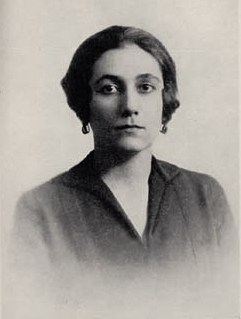
Olga Woronoff was born in Potchep, Russia, the daughter of Count Constantine Kleinmichel. Her memories of childhood and experiences of life in Russia before the Revolution of 1917 were published in a book, Upheaval, which she dedicated to her daughter, Tatiana. In the book she describes the deeply religious Russian Orthodox life of her aristocratic family.
Olga Woronoff was officially presented at Court to the Dowager Empress Marie and the young Empresses Olga, Tatiana, Marie and Anastasia. There she met her future husband, Paul Woronoff, a Lieutenant Commander in the Imperial Russian Navy, who served as an officer on Their Majesties’ yacht, Standard.
In early 1914 she married Paul Woronoff, in the Feodorovsky Cathedral at Tsarskoe Selo. The Tsar and the Empress fulfilled the traditional roles of representing the parents of the married couple. In her book, Olga Woronoff described in detail the frightening period of the Great War and subsequent Revolution. Eventually she and her husband, who fought with the White Army, escaped on an English steamer, Hanover, to Constantinople and then on to Paris, where their daughter Tatiana was born. They were joined in Paris by Olga’s mother and three sisters. The family later emigrated to the USA and then to Australia.
Olga Woronoff wrote the book of family memories, Upheaval, for a daughter she knew would never know the Russia of her parents’ youth, nor the aristocracy of pre-Revolution days.
30. Kum Yuen Yuen (1875-1943) Businessman
Chinese AA 121

Kum Yuen was born in the village of Chung Wok, Zhongshan, China. He arrived in Victoria in 1897, and moved to Western Australia in the following year. He married Maggie Sam in June 1910 in Perth, and they had five children.
Kum Yuen was a cabinet maker in the See Wah & Co Furniture Factory in West Perth. He travelled to China with his family in 1912, and returned alone in 1913. His family returned to Perth with him after a subsequent visit in 1921.
In 1916, Kum Yuen formed a partnership with Yen Hay Hoy and Mew Toy, and established the J W Wing Furniture Factory at 237 Newcastle Street. They employed 14 Chinese and four Caucasian workers. When Mew Toy retired in 1934, Kum Yuen became sole owner of the business.
In those days all Chinese furniture was required to display an “Asian Labour” stamp. The stamp proved to be an incentive, not a deterrent for buyers, as it established the furniture as a quality product.
Kum Yuen was an active community member. He was a founder and treasurer of the Chung Wah Association, and also an organiser of the Kuo Min Tang Association. In the 1930s he was a partner in the Nanking Restaurant in Barrack Street, Perth with Yuen Bow. During World War II he was treasurer of the Chinese Patriotic Society, which raised money for the Chinese war effort. Together with his wife Maggie, they helped to billet war refugees from Malaya and Asia.
31. Hsing Li Kuang “Henly” Fong (1876-1957) Tailor
Chinese AA 220
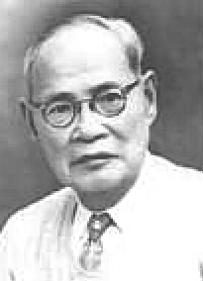
Henly Fong was born in Canton, China. He was an experienced tailor and when he arrived in Darwin, Australia in June 1896 he established a merchant business. He later went gold prospecting with a few friends in Tennant Creek, Katherine and Daly Waters in the Northern Territory. In order to supplement their meagre diets, the Chinese prospectors often planted lotus roots at various water holes so that when they came by again there would be a ready food supply. However, the food supply was not always available as the water occasionally dried up or it was already taken by others.
Gold prospecting was not very favourable for the Chinese, and it was a hard life trying to save money or support a family. By the early 1900s Henly Fong returned to tailoring, first at Cossack and eventually in Broome. He married on a return visit to China in 1917 and his wife and son came to stay in Broome from 1923-1935.
During World War II Henly Fong was evacuated to Perth. His business in Broome was burned down in June 1946, so he remained in Perth. In his 70s he managed to survive as a casual worker for some of the Chinese restaurants in Perth and lived out his life in a room at the rear of Hop Hing & Co, 124 James Street.
32. Paul Joseph McGinness (1896-1952) Aviator and Qantas Co-founder
Roman Catholic LA 342
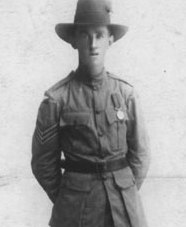
Born at Framlingham, Victoria, Paul Joseph McGinness joined the 8th Light Horse Regiment in 1914. He served at Gallipoli during the First World War and went on to be awarded the Distinguished Conduct Medal for scouting and leadership in the Sinai desert in 1916. After transferring to the Australian Flying Corps in 1918, McGinness was credited with seven aerial victories and earned a Distinguished Flying Cross.
After the war, McGinness together with his friend and Gunner lieutenant Hudson Fysh were engaged in surveying an air-route across Australia for the first England-Australia air race in 1919. In 1920 McGinness provided much of the initial drive to establish the first airline in eastern Australia, Queensland and Northern Territory Aerial Services Ltd. (Qantas). McGinness piloted the first Qantas air mail and passenger flight in 1922.
After leaving Qantas in late 1922, McGinness and his wife Dorothy were pioneering farmers in the Morawa district in Western Australia. He served in the Royal Australian Air Force during the Second World War, and then returned to take up tobacco farming in WA until his death in 1952, aged 55.
33. Percy Archibald Button (1892-1954) Busker
Roman Catholic NA 352
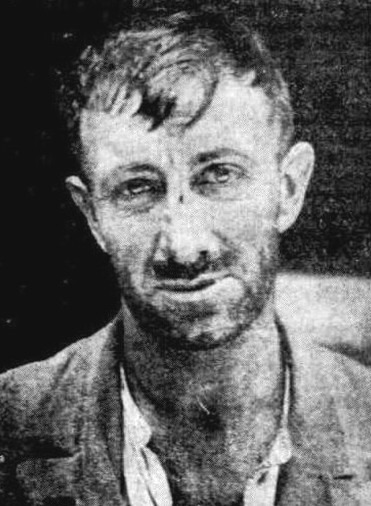
Percy Button was born in London and emigrated to Western Australia in 1910. He worked as a farmhand and at odd jobs in Perth. In 1917 he enlisted in the Australian Imperial Force 44th Battalion and went to England, but did not serve at the Front. After the War, he lived the life of a vagrant around Perth. Dressed in his trademark scruffy long tail coat and with hat by his side, Percy became the city’s best-known street entertainer with tumbling, somersaults and tricks with handcuffs.
Although often arrested for vagrancy – when the police gave him a bath and warm lodgings – he was respected as being scrupulously honest. Percy was not a drunkard, but occasionally a gambler when he had cash in hand. When a newspaper published a front-page picture of a ‘well-known Perth character’, scrubbed up in top hat, white tie and tails, few recognised ‘Percy Buttons’.
Living on the streets, cold winters and an unfriendly physical attack left him with ill-health. He lived his final years at the Old Men’s Home in Dalkeith. Today it is fitting that a statue of Percy Button stands in his honour in Perth’s Hay Street Mall, the very location where he performed for so many passers-by.
34. Pietro Giacomo Porcelli (1872-1943) Sculptor
Roman Catholic MC 393
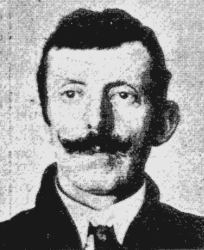
Pietro Giacomo Porcelli was born in Bisceglie, Bari, Italy. His family migrated to Australia and Pietro Porcelli studied at the New South Wales Academy of Art. He later returned to Naples to study sculpture and drawing with D’Orsi, the President of the Royal Academy. On completion of formal studies he came to Perth with his father Leonard, and lived in Henry Street, Fremantle.
His first commissioned work was the life-sized bust of Sir John Forrest, situated at the main entrance of Parliament House. He also created the full-sized statue of Alexander Forrest, Sir John Forrest’s brother and a great surveyor and explorer, which stands at the entrance to the Supreme Court Gardens.
Porcelli created many impressive statues which are still seen today in prominent locations around the State. His crowning achievement is considered to be the peace memorial at the Midland Junction Railway Workshop. Other commissions included the C.Y. O’Connor bust at Mundaring Weir and the heroic statue of C.Y. O’Connor at Fremantle Harbour.
Pietro Porcelli married Martha Goodwin in 1910 and had a son and daughter. He moved to Melbourne in the 1920s and in those years worked on carving the twelve panels for the Victorian Shrine of Remembrance. He returned to Perth in 1939.
In the 1980s, Giuseppe Rispoli, a friend of Porcelli and Founder of the Porcelli Memorial Fund, proposed that a statue of the sculptor be commissioned by the Italian community in honour of his memory and his creative artistry. The bronze statue was sculpted by Greg James and erected in the square near the Fremantle Town Hall in 1993.
35. John Joseph “Jack” Simons, (1883-1948) Founder of the Young Australia League and Newspaper Owner
Roman Catholic HC 60
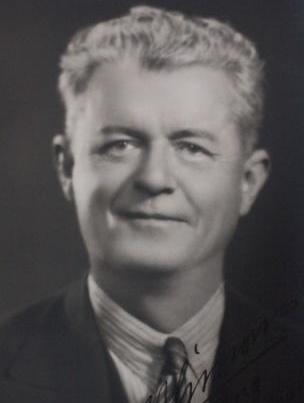
John Joseph “Jack” Simons was born in Clare, South Australia and came to Western Australia in 1896 to work as a tinsmith. He was committed to social improvement, Australian nationalism and the Labor Party. He was secretary of the WA National Football League, 1905-1914.
Together with Lionel Boas (secretary of the Karrakatta Cemetery Board) John Simons established the Young Australia League in 1905 to promote “education through travel”. The League was a patriotic, independent, non-sectarian and non-political organisation with girls and boys as members.
After World War I, Simons founded interstate branches of the League and also founded the Araluen Gardens in the 1930s as a memorial to League members killed in action during the War. Though Simons campaigned against conscription in 1916-1917, he was an unsuccessful candidate for Labor in Fremantle in 1917.
Considered physically unfit for military service, he joined the militia and served at home. He was elected to Parliament in 1921 for the Labor seat of East Perth, but resigned the next year. Jack Simons and Victor Courtney founded the weekly Call, and later the weekly Mirror in 1921. In 1935, they formed a partnership with Claude de Bernales and bought The Sunday Times.
Simons was managing director, and his paper eventually opposed the secession movement in Western Australia. Simons was a member of the Australian Natives’ Association, a Rotarian, and life member of the WA Trotting Association. He did not marry, and bequeathed his interest in Western Press in trust for the Young Australia League. Jack Simons died 24 October 1948 aged 65 years.
36. Alexander Henry Pitman (1872-1926) and John Joseph Walsh (1862-1926) Policemen
Roman Catholic HC 14/15

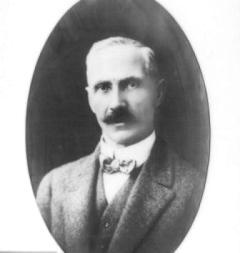
Alexander Pitman was born in Victoria in October 1872. He married Angela Fitzgerald, and joined the WA Police Force in 1897, serving in the Murchison, Eastern Goldfields and two years in Fremantle. He was promoted to detective sergeant and was active in the gold-stealing detection staff in Kalgoorlie.
John Walsh was born in Ireland in June 1862, migrated to Australia in 1881, joined the WA Police Force in 1891 and married Marie Newell in 1900. He was stationed at York and Beverley in the early years of his service, and in 1894 was in charge of the police station in Coolgardie. Walsh was promoted to detective sergeant in 1897. In 1912, he was sub-inspector and in 1920 was in charge of C.I.D.
Gold stealing was always a major problem in the WA Goldfields and a Royal Commission in 1906 recommended the establishment of a gold squad to work independently of the local police force. Some years later, the two members of the gold squad, Pitman and Walsh, worked together in Kalgoorlie.
On 28 April 1926, both policemen rode out of Kalgoorlie on their bicycles to an unknown destination and did not return. On 12 May 1926, their charred and dismembered bodies were found in a disused mine shaft nearly ten kilometres south west of Kalgoorlie.
On 6 June 1926, Evan Clarke, Philip John Treffene and William Coulter, partners in a gold stealing operation, were arrested for the murder of Pitman and Walsh. Evan Clarke turned King’s evidence against his partners and avoided going to trial. His evidence assisted in the conviction of Treffene and Coulter. The coroner’s inquest finished on 9 July, the trial began 15 September, and an appeal was dismissed on 1 October. William Coulter and Philip Treffene were hanged at Fremantle Gaol on 24 October 1926.
The funeral of Alexander Pitman and John Walsh began with a requiem mass at St Mary’s Cathedral. The cortege then passed through the centre of Perth to West Perth and Karrakatta Cemetery. The foot police travelled by car to the cemetery, and the mounted police by train. Archbishop Clune conducted the service, attended by thousands lined up along the route and at the cemetery to pay their respects.
A memorial statue honouring the two men was unveiled in December 1929 outside the Police Barracks in James Street, Perth. Today, the statue stands at the Joondalup Police Academy and is dedicated to all police officers who have lost their lives in the course of their duty in Western Australia.
37. Patrick Pelly (c1837-1899) Reformed Criminal
Lance Howard Memorial Gardens BB 64
Patrick Pelly was the assumed name of a bushranger also known by several other names including Frank Pearson, Frank Gordon and Captain Starlight. He was involved in numerous criminal activities and was imprisoned for 15 years for the murder of a police officer in New South Wales.
Upon his release from Darlinghurst Gaol in 1884, he headed to Queensland where he was imprisoned for fraud. While in prison he met another prisoner, Patrick Pelly, and adopted that name.
Arriving in Perth in 1896 via New South Wales and South Australia, Pelly took up residence in a boarding house in Beaufort Street and found employment as a clerk-accountant with the WA Geological Survey. Some historical accounts have linked Pelly to the fictional hero of Rolf Boldrewood’s novel Robbery Under Arms, but the author denied this.
Pelly was vain about his age and kept his moustache dyed by removing the stains with potassium cyanide. On 22 December 1899, whilst in a drunken state, he swallowed the contents of the cyanide bottle and died.
38. Ellen Amelia Montague (1868-1893) Smallpox Victim
Roman Catholic CA 287
On 10 April 1893, Ellen Montague was named in a newspaper report as the first victim of the new smallpox outbreak in Perth. She was aged 25 years, the wife of labourer John Montague. They lived in Butlers Yard, off Goderich Street, East Perth.
When she became ill with smallpox, Ellen Montague had barely recovered from a bout of typhoid fever she had contracted some months previously. Unfortunately, she was pregnant and went into early labour, delivering a stillborn baby on 5 April 1893.
She was moved into the Colonial Hospital, and was soon joined by many other patients who were subsequently shifted to the Subiaco camp and the Infectious Diseases Hospital. Ellen Montague died on 18 April. Donald Chipper, the undertaker, placed the body in a coffin tarred inside and
out and containing quicklime. The police van, converted to an ambulance, was accompanied by a police escort and her burial took place at midnight in the new cemetery reserve at Subiaco. No priest was allowed to attend the funeral, but it was reported that Mrs Montague had received extreme unction ten days before her death.
In September 1906, all the remains of persons buried at Subiaco cemetery (now known as Dom Serra Grove in Jersey Street) were exhumed and re-interred at Karrakatta Cemetery.
39. Cecil Lancelot “Lance” Howard (c1913-1989) WWII Airman and Chair of the Karrakatta Cemetery Board
Lance Howard Memorial Gardens FC granite boulder

In his manuscript, Karrakatta Memories, Rabbi Shalom Coleman referred to Lancelot Howard, Chairman of Karrakatta Cemetery Board from 1979-1987, as “a gentleman’s gentleman, benign, cool and considerate; a man who brought a dimension to the office and was conscious of the needs of Karrakatta without fear or favour”.
The ninth Chairman of the Board of Management had given distinguished service to his country during World War II. Lancelot Howard DFC enlisted with the RAAF in October 1940, serving in Bomber Command. He was attached to the RAF from 1942-1944 as a navigator. He completed a tour of 25 raids over enemy territory in 49 Squadron, reaching the rank of Pilot Officer (Nav).
Howard was a member of the flight crews under Guy Gibson VC known as “The Dambusters” that successfully breached the Moehne, Eder and Sorpe Dams in an exceptional dawn bombing raid in November 1943.
After the war Lancelot Howard worked in the Repatriation Department until 1953 when he was appointed Shareholder’s Liaison Officer at The West Australian. He remained there until ill-health forced his early retirement in 1972. Lancelot Howard was committed to the establishment of the RAAF Association memorial estate for ex-servicemen in Bull Creek, and served six years as President of the RAAF Association (WA).
On his retirement from the active workforce, Lancelot Howard refused an MBE in the Queen’s Honour List, stating he believed it was awarded to him on behalf of the Association and he considered it insufficient recognition of the work of the Association. Karrakatta Cemetery and Pinnaroo Valley Memorial Park made great strides under his chairmanship.
40. James Joseph Kenneally (1879-1954) Unionist and Politician
Lawn ROEC 39
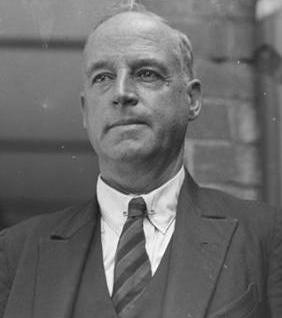
James Kenneally was born in New South Wales and was educated at the Christian Brothers in Redfern, Sydney. He married Mary Ann Flaherty in 1911. Kenneally was employed with the Western Australian Government Railways and became involved in the union movement. He was elected President of the WA Loco, Engine Drivers, Firemen and Cleaners Union in 1914 and appointed Secretary in 1919.
Kenneally joined the Australian Labor Party and became State President in 1927. He was elected MLA for East Perth in that same year and served until 1936, holding various ministerial offices from 1933 to 1936. He also served as Chairman of the Lotteries Commission and was a member of the Commonwealth Grants Commission.
41. Archbishop Patrick Joseph Clune (1864-1935) Priest
Roman Catholic CC 40
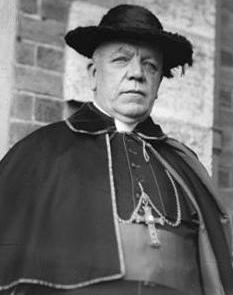
Patrick Clune was born in Ireland and was educated at Ruan and All Hallows, Dublin. He was ordained a priest in 1886. He came to Australia and was appointed to the Diocese of Goulburn in New South Wales. He later returned to England and entered the Order of Redemptorists, later returning to Australia to be appointed to serve under Bishop Gibney in the Diocese of Perth.
He was appointed Bishop of Perth in December 1910, and served Perth until he died in office in May 1935. During his term as Bishop of Perth, he cleared the heavy debts that had been incurred during Bishop Gibney’s tenure of office. Bishop Clune visited Rome in 1913, and was appointed Archbishop of Armed Forces during World War I.
In May 2013 the remains of Archbishop Clune were exhumed to be interred within St Mary’s Cathedral in Perth. His headstone remains in situ.
42. Dan Shea (1837-1908) Prospector
Roman Catholic BC 232
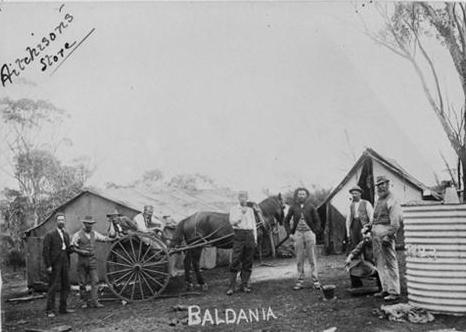
Dan Shea was born in County Cork, Ireland, and emigrated in 1868 to prospect on the goldfields of Australia and New Zealand. He teamed up with Paddy Hannan and Tom Flanagan and the three prospectors worked together to prospect out of Coolgardie. On 15 June 1893 they discovered gold at Kalgoorlie. Paddy Hannan returned to Coolgardie to apply for a reward claim.
Flanagan and Shea continued prospecting the site. After the goldrush to the area, the three men did not remain to see the amazing growth of Kalgoorlie. By 1894 the original claim passed into other hands and the three men went their separate ways.
Shea continued to “chase the weight” through the Murchison and Pilbara goldfields.
His last years were spent in and around Perth and he died a pauper in 1908. His gravesite was restored in 1973 after a representation by Mr Tom Evans, the then Member for Kalgoorlie.
43. Dame Dorothy Tangney (c1907-1985) Educator and Politician
Roma Catholic AC 294
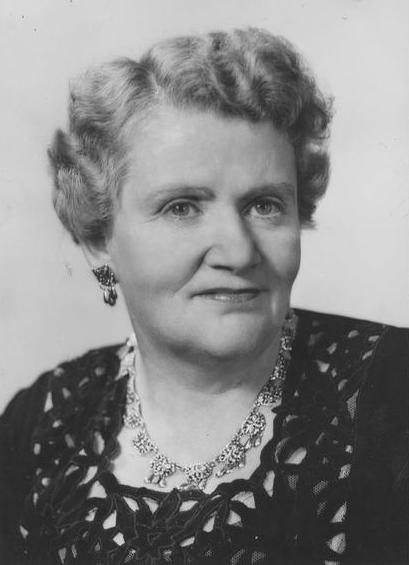
Dorothy Margaret Tangney was born in Perth, the third child of Ellen and Eugene Tangney, in a family of nine children. Her father was an engine driver, and her early years were spent in the mill towns of Marrinup and Holyoake. When the family moved to Fremantle she attended St Joseph’s Convent.
Dorothy Tangney was 13 when she passed the Junior Certificate, won a gold medal for music and passed the Alliance Francaise examinations. She matriculated at 15 and decided to study for the Bachelor of Arts degree part-time. At the completion of the degree she continued at the University of Western Australia as a post-graduate student for the Diploma of Education. She became a very able debater, was president of the Debating Society, served on many committees and was elected the first woman President of the Societies Council. In 1940, the Guild of Undergraduates conferred on her the Honorary Life Associateship of the Guild, the first woman student at UWA to be so honoured.
Dorothy Tangney entered politics in 1943 for the Australian Labor Party and created history as the first woman in Australia to be elected to the Senate. Her list of achievements from September 1943 were considerable. She was a courageous fighter for Labor’s cause and the plight of the disadvantaged, and many of her recommendations on their behalf are now enshrined in the law. She had a deep compassion for people and her home was always open for those in need.
Dorothy Tangney was created a Dame Commander of the British Empire in the Queen’s Birthday List in June 1968, the first Western Australian woman to receive this honour. She died in Perth in 1985 aged 78 years.
44. Thomas Ahern (1884-1970) Merchant and Draper
Roman Catholic AC 463B
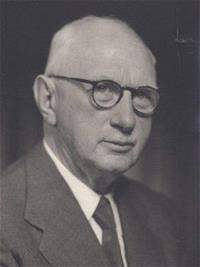
Thomas Ahern was born in County Cork, Ireland in 1884. After leaving the village school, Ahern was apprenticed to a draper and worked until his assisted passage to Fremantle in 1911. Employed by Brennan’s drapery at Boulder, Ahern married his fiancée Nora McGrath in Perth in 1912.
Ahern was invited to manage drapery and furniture store Roberson and Moffat’s Successors. He insisted on a controlling partnership and opened as Ahern’s Ltd in 1922. The successful business grew to include suburban expansion, employing over 500 staff in 1970. Thomas Ahern’s kindness to staff was well known, and by the time of its sale to David Jones in 1999, Ahern’s was the last family-owned department store chain in Australia.
Thomas Ahern accepted public offices in later life including serving as a trustee of the Karrakatta Cemetery Board from 1938-1942 and as patron of the Claremont Football Club from 1940-1969.
45. Sir Walter Dwyer (1875-1950) Lawyer
Roman Catholic Lawn 1 A12
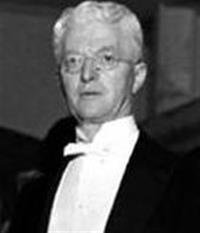
Walter Dwyer was born in Ireland and migrated to Western Australia, where he married Maude Mary Smith. While working as a clerk in the Education Department for nine years, he studied law part-time. When he qualified, Dwyer worked as a lawyer in Kalgoorlie and Boulder from 1907 to 1909, and in Perth from 1910 to 1917 with the firm Dwyer, Durack and Dunphy.
Walter Dwyer joined the Labor Party and was elected MLA for Perth in 1911, serving one term until 1914. In 1926 he was appointed the first presiding judge of the State Court of Arbitration and retired from that position in 1945. He was a trustee of the Public Library, Museum and Art Gallery from 1913, and served as president and trustee from 1929-1947. He was knighted for his services to law and the community in 1949, and died in March 1950 at the age of 75 years.
Acknowledgements
The Metropolitan Cemeteries Board acknowledges the Royal Western Australian Historical Society (RWAHS), the National Trust (W.A.) and the Heritage Council of Western Australia for their invaluable contribution to the establishment of this project.
The Board further acknowledges the committee members who were responsible for the concept, research and preparation of the material for the original Karrakatta Historical Walk Trails:
Mr Bruce James, MCB Board Member
Mrs Lee Fernie, RWAHS
Dr Leonie B. Liveris, Historian, MCB Board member
Mr Bill Bullock, Community Relations Consultant, MCB (retired)
Bibliography
Australian Dictionary of Biography, Carlton: MUP, 1966-.
Erickson, R, Dictionary of Western Australians 1829-1914, Nedlands: UWAP, 1979.
Ewers, J K, Long Enough for a Joke, Fremantle: FACP, 1983.
Keane, S B, Pietro Porcelli – a thesis written on the life of the sculptor and summarised in
RWAHS Journal. Early Days. Vol. 8, Pt 5, p 9.
Liveris, Leonie B, The Dismal Trader. The Undertaker Business in Perth, 1860-1939 Perth:
Park Print, 1991.
Popham, Daphne, Reflections, Perth: Carrolls, 1979.
Reid, Arthur, Those Were the Days, Perth: Hesperian Press, 1986.
Stannage, C T, The People of Perth, Perth: Perth City Council, 1979.
Stannage, C T, (ed), A New History of Western Australia, Perth: UWAP, 1981.
Stewart, Noel, Little But Great… Saga of the Silver Chain (1905-1965), Perth:
H Grey, 1965.
Terrell, John, Goldfields Sport. A Century of Heroes, Heroines and Happenings, Bateman: J
Terrell, 1993.
The Chung Wah Association Inc. Historical Group.
The Salvation Army Historical Society, WA Chapter.
The Weekend Mail.
The West Australian.
Thomson, Tess, Paddy Hannan. A Claim to Fame, Kalgoorlie: Thomsons Reward, 1992.
Woronoff, Olga, Upheavel, New York: G P Putnam, 1932.
Yiannakis, John, Megisti in the Antipodes, Perth: Hesperian Press, 1996.
Wigmore, Lionel, They Dared Mightily, Canberra: Australian War Memorial, 1963.
Photographs
Michael O’Dea
Bowra & O’Dea Funeral Directors
Courtesy of the O’Dea family
William Bold
Battye Library 3242B/389
May Holman
RWAHS
Richard Anketell
Eastern Goldfields Historical Society 42/OA
Charlie Wandi
The Salvation Army Historical Society
Peter Michelides
State Library of Western Australia, 016493PD
George Peter Kailis
Courtesy of the Kailis family
Kum Yuen
Chung Wah Association
Henly Fong
Chung Wah Association
John Joseph Simons
Courtesy of the Boss Simons Memorial Museum and Library
Lance Howard
Courtesy of the Howard family
James Kenneally
State Library of Western Australia, 049286PD
Archbishop Patrick Clune
State Library of Western Australia, 047791PD
Dan Shea
State Library of Western Australia, 028947PD
Thomas Ahern
Courtesy of the Ahern family
State Library of Western Australia, B2288575
Claremont Football Club
Sir Walter Dwyer
State Library of Western Australia, 006202D
The Board gratefully acknowledges permission to use photographs from the State Library of Western Australia, the Royal Western Australian Historical Society, the Boss Simons Memorial Museum and Library, and from private family collections.
